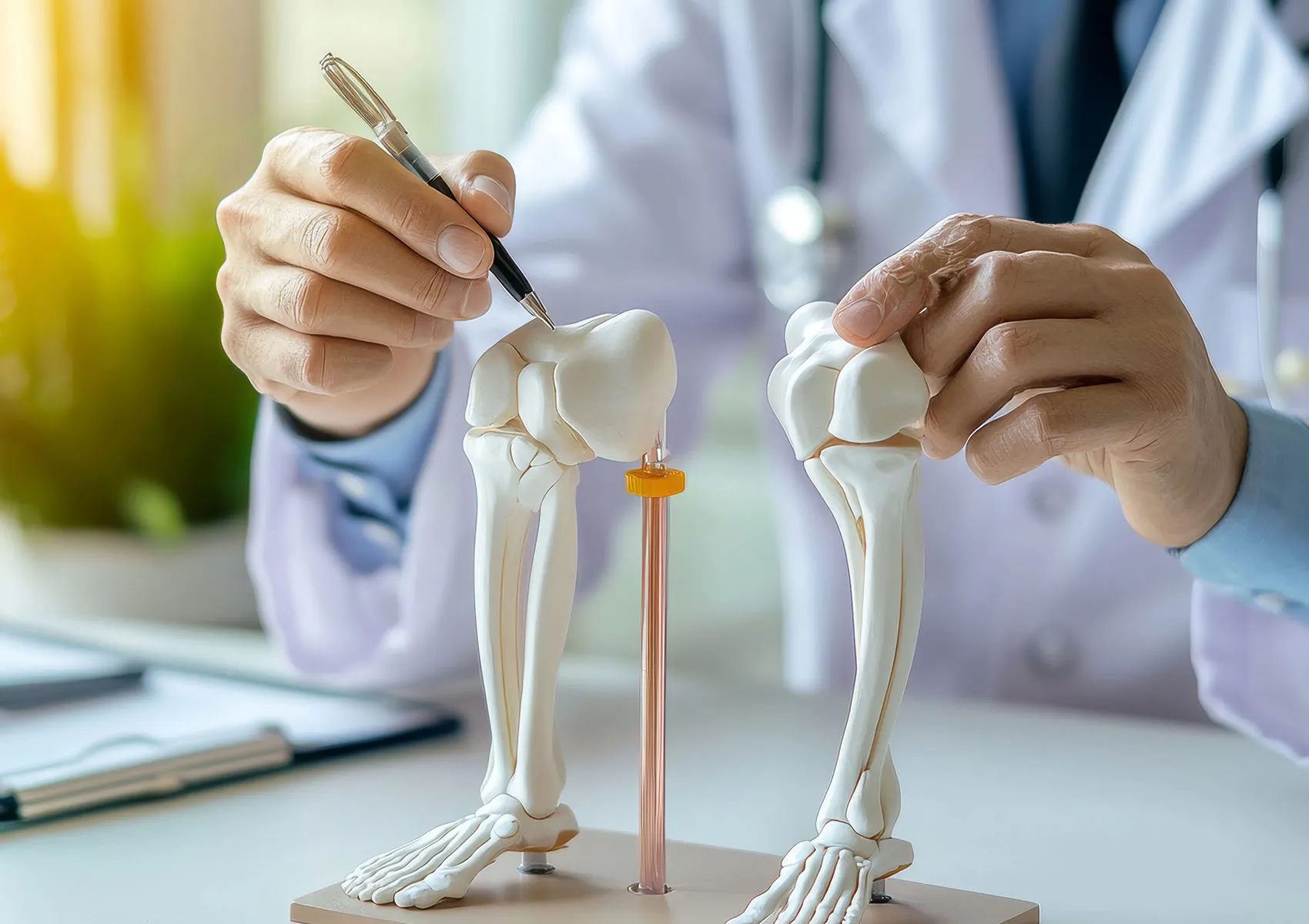What Conditions Does Orthopedics Treat?
The Medical Specialty of the Musculoskeletal System
Orthopedics and Traumatology is the branch of medicine that focuses on the diagnosis, treatment, and rehabilitation of diseases and injuries involving bones, joints, muscles, tendons, ligaments, and nerves. It covers a wide range of conditions—from fractures and dislocations to arthritis, sports injuries, and congenital deformities.
In this article, we explore the most common medical problems managed by orthopedic specialists and explain their areas of expertise in a clear and informative way.
Main Areas of Orthopedics
1. Trauma and Fractures
- Bone fractures (arm, leg, hip, shoulder, etc.)
- Spinal fractures
- Open or closed fractures
- Dislocations and sprains
- Soft tissue injuries from trauma (muscles, tendons, ligaments)
2. Sports Injuries
- Anterior cruciate ligament (ACL) tears
- Meniscal injuries
- Tendon tears (Achilles, patellar, rotator cuff)
- Muscle strains and ruptures
- Labral tears and athletic pubalgia (sports hernia)
3. Joint Disorders
- Osteoarthritis in the knee, hip, shoulder, and ankle
- Joint deformities due to rheumatic diseases
- Synovitis, bursitis, and joint effusions
- Joint instability and dislocations
4. Spinal Conditions
- Scoliosis (spinal curvature)
- Kyphosis (hunchback)
- Herniated discs (lumbar or cervical)
- Spinal fractures
- Spinal stenosis (narrowing of the spinal canal)
5. Congenital and Developmental Disorders
- Developmental dysplasia of the hip (DDH)
- Clubfoot (pes equinovarus)
- Leg length discrepancies
- Pediatric knee deformities (bowlegs, knock-knees)
6. Cartilage and Soft Tissue Problems
- Articular cartilage damage
- Chondromalacia patella
- Tendinitis (tennis elbow, golfer’s elbow)
- Gluteus medius tears
- Piriformis syndrome
7. Tumors and Infections
- Benign and malignant bone tumors
- Soft tissue tumors
- Bone and joint infections (osteomyelitis, septic arthritis)
8. Joint Replacement and Reconstructive Surgery
- Total hip replacement
- Total knee replacement
- Shoulder and elbow prosthetics
- Cartilage repair and resurfacing techniques
Common Treatment Methods in Orthopedics
- Conservative treatments: Medication, rest, splints, braces, physical therapy
- Surgical interventions: Open or arthroscopic procedures
- Biological therapies: PRP (platelet-rich plasma), stem cell injections
- Rehabilitation programs: Postoperative physiotherapy
- Joint-preserving surgeries: Osteotomy and resurfacing techniques
When Should You See an Orthopedic Specialist?
- Persistent or sudden joint pain
- Swelling, bruising, or restricted movement after an injury
- Pain during or after physical activity
- Difficulty walking, climbing stairs, or standing up
- Joint locking, popping, or instability
- Chronic neck or back pain
- Visible deformities in limbs or spine
- Evaluation for joint replacement surgery
FAQ
-
What types of conditions are treated in orthopedics?
Orthopedics deals with bone, joint, muscle, ligament, tendon, and spine-related injuries and diseases, both congenital and acquired.
-
Which doctor should I see for a sports injury?
You should consult an orthopedic specialist. They may work together with a sports medicine physician.
-
Is a herniated disc treated by orthopedics?
Yes. Spinal conditions including disc herniations fall under orthopedic spinal surgery.
-
Are orthopedic surgeries painful?
Thanks to modern surgical techniques and pain management, most procedures are well tolerated.
-
Should I see an orthopedist for hip or knee pain?
Yes. Especially if the pain worsens with movement or limits your daily activities, early evaluation is crucial.

